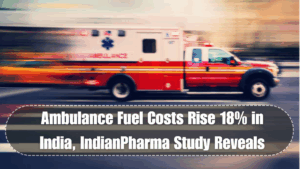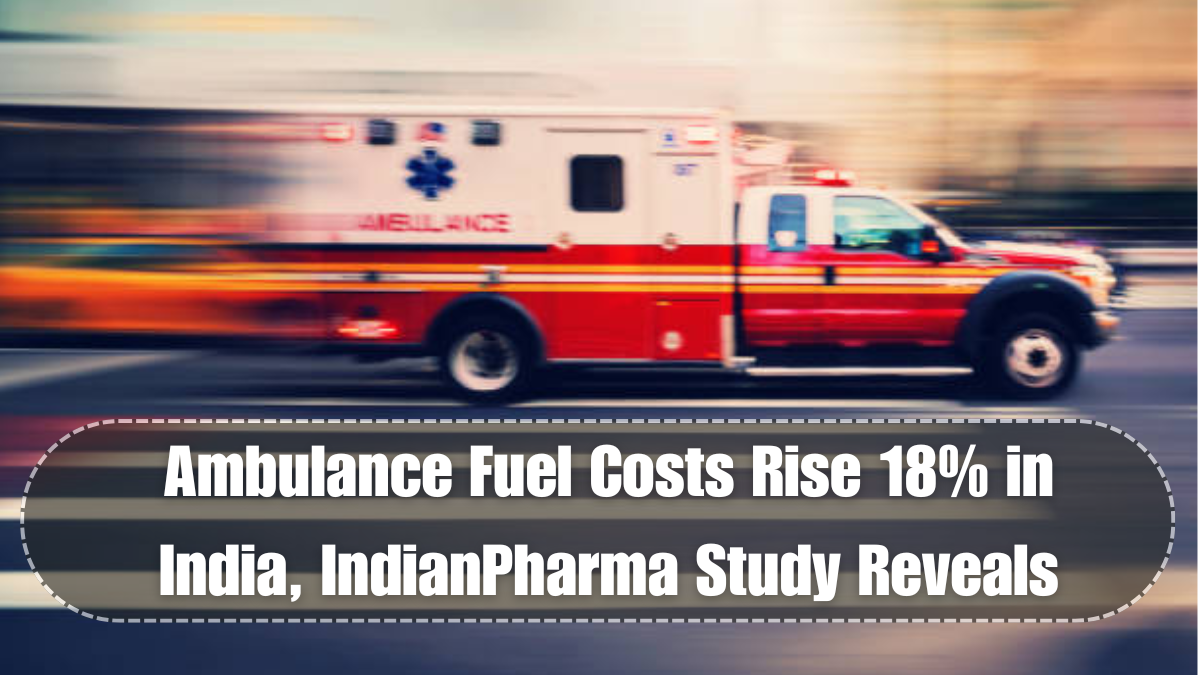According to a recent study by IndianPharma, ambulance fuel expense trends across India have risen by an average of 18% year-on-year in 2025. This alarming increase in ambulance fuel costs is impacting both private and public hospitals, especially in Tier 2 and Tier 3 cities where longer travel distances are involved in patient transportation.
The study analyzed over 10,000 ambulance routes and fleet logs between January 2024 and April 2025, finding significant cost pressures resulting from rising diesel and petrol prices, along with expanded emergency transport services during public health campaigns.

Key drivers behind rising ambulance fuel costs
Several factors contribute to the surge in ambulance fuel expense trends, making it difficult for hospitals and government bodies to manage health transport budgets effectively.
-
Fuel inflation: Fuel prices rose consistently throughout 2024 and early 2025, with diesel reaching ₹96/litre in several states.
-
Increased emergency calls: Hospitals recorded up to 20% more emergency ambulance trips post-COVID due to enhanced patient awareness and chronic condition monitoring.
-
Expanded coverage areas: Ambulances now serve rural belts more frequently under state health programs, adding to the distance covered per trip.
-
Traffic congestion: Metro cities like Delhi, Mumbai, and Bengaluru report higher idle fuel consumption due to extended roadblocks and diversions.
-
Poor fleet efficiency: Many hospitals still use older vehicles with low mileage, increasing the average fuel spend per km.
IndianPharma’s hospital logistics report highlights the need for better fuel management policies, smart routing, and EV ambulance adoption to combat escalating costs.
Financial impact on health transport providers
For small and mid-sized private hospitals, the jump in ambulance fuel costs is starting to affect operational budgets. Many providers report spending an additional ₹20,000–₹50,000 per month on emergency transport compared to last year. Public hospitals under government healthcare schemes are also under pressure as allocations fall short due to budget constraints.
This rise is particularly burdensome for health transport service providers that rely on third-party vendors. To maintain 24/7 availability, they are either absorbing the costs or passing them on to patients — sometimes doubling ambulance charges in critical hours.
Some hospitals are resorting to:
-
Fuel-efficient route mapping
-
Shift-based dispatch to reduce idle time
-
Integration with shared ambulance aggregators
-
Transition plans for partial EV conversion
Despite these efforts, the ambulance fuel expense trends continue to show an upward trajectory due to volatile global fuel markets and growing patient mobility needs.
Table: Average Monthly Ambulance Fuel Costs in 2024 vs 2025
| City/Tier | Avg. Monthly Cost (2024) | Avg. Monthly Cost (2025) | Percentage Increase |
|---|---|---|---|
| Tier 1 (Delhi/Mumbai) | ₹60,000 | ₹70,800 | 18% |
| Tier 2 Cities | ₹45,000 | ₹53,100 | 18% |
| Rural Areas | ₹32,000 | ₹37,760 | 18% |
Need for sustainable logistics in hospital systems
The study recommends a shift toward smarter hospital logistics, where fuel tracking, fleet optimization, and EV integration play a major role. The current health transport system lacks digitized fuel monitoring in most regions, leading to leakages and inefficiencies.
Hospitals and health departments are encouraged to:
-
Use GPS-based mileage tracking
-
Regularly service fleets for mileage efficiency
-
Adopt fuel purchase cards for cost control
-
Shift to hybrid or electric ambulances for frequent routes
These steps will not only help lower the ambulance fuel expense trends but also support India’s larger carbon-neutral goals.
Conclusion
The sharp increase in ambulance fuel expense trends is a wake-up call for India’s healthcare transport ecosystem. Rising ambulance fuel costs are stressing both public and private medical services, highlighting the urgent need for fuel-efficient strategies and cleaner technologies. With smart planning, EV adoption, and digitized hospital logistics, providers can reduce dependency on costly fuels and offer affordable, responsive care. Addressing these challenges today ensures a more sustainable and equitable health transport system tomorrow.
FAQs
What are ambulance fuel expense trends in India for 2025?
They indicate an 18% year-on-year increase in fuel spending across hospitals, according to IndianPharma’s analysis.
Why are ambulance fuel costs rising?
Fuel inflation, increased emergency trips, longer rural routes, and inefficient vehicles are major reasons.
How are hospitals coping with these costs?
By optimizing routes, exploring shared services, and gradually switching to EV ambulances.
Is there a difference between public and private hospital expenses?
Yes, private hospitals report higher cost spikes due to lack of subsidies and less fleet standardization.
Can EV ambulances help reduce these expenses?
Yes, electric ambulances offer significant savings on fuel, especially for short and frequent transport needs.
Click here to know more.
